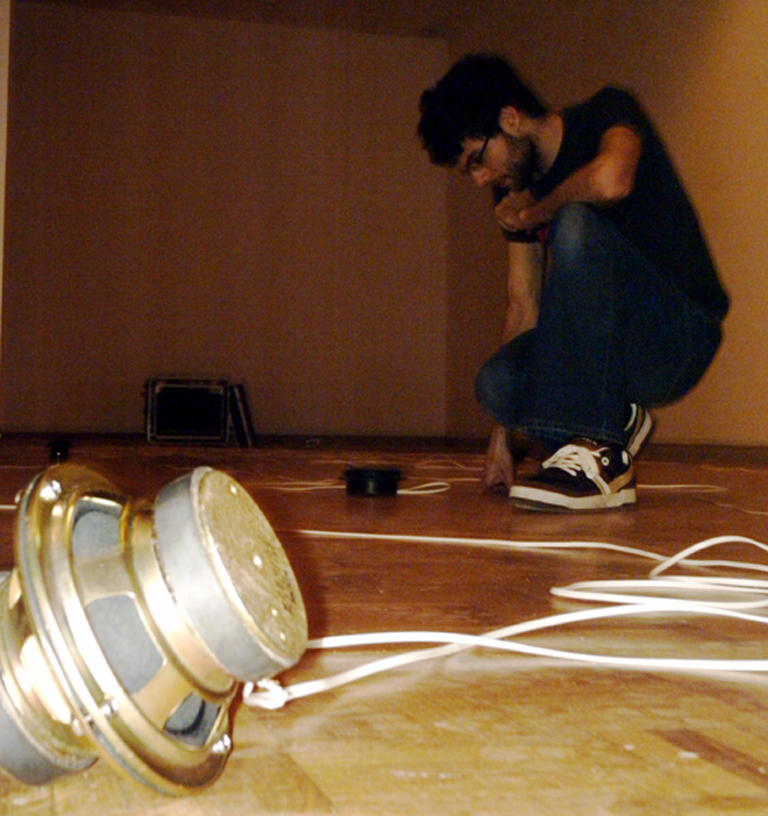
Nervouse
Ellen Moffat
February 18 - March 19, 2006
Nervous chatter: a syntax synapse.
By derek beaulieu
Jacques Attali argues that “Today, it is unavoidable, as if, in a world now devoid of meaning, a background noise was increasingly necessary to give people a sense of security. And today, wherever there is music, there is money.”
While background noise may create a flattened, democratic, capitalist background hum, it also produces an uneasy anxiety, the fretting of overheard conversation, eavesdropping and (mis)understanding.
Composer John Cage describes entering an anechoic chamber - a room engineered to be as silent and echo-free as possible. He reported to the sound engineer that two continuous sounds were audible: one high and one low. The engineer replied to him that the high sound was the electrical whine of Cage’s own nervous system, while the low was the churn of his circulatory system. The speakers arranged through the gallery space in Nervouse broadcast from a rhizome web - nodes of the speaking nervous system - a tying together of independent conversations into a larger unplaceable architecture of sound.
Through this structure of syntax Ellen Moffatt builds a fugue of phonemes, gathering the phonetic particles of language - its smallest sub-syllabic spoken pieces - into a contrapuntal arrangement of spoken musicality. Nervouse builds an architectural space through the accumulation of particles of conversation. All the sound-pieces that make a place hum with activity are isolated and re-presented.
But isn’t the sound of place, as we have the Nervouse, the very place itself?
As the viewer interacts with the surrounding form of Nervouse, she constructs the fugal arrangement of the work by timing her arrival at the ‘speakers’ (and here the electrical speakers replace the human speakers of poetic text in an uncanny dance of voice) creating the means to physically inhabit the cacophonic schizophrenia of daily life. With Nervouse, language proves itself, as Steve McCaffery posited, “less a communication than the loss of communicabilities.” The phonic fragments - the loss in language - leaves us tongue-tied and anxious.
In Nervouse, sound becomes a physical presence, the black speakers and entwined wires snaking across the room adding to the sound-scape that is created by the dynamic relationship of the viewer to the installation itself. The wires and the speakers reverse the biological map of sound-waves from the ear through the auditory nerve of the brain. The walls and floors of the gallery are covered in raw auditory nerves. The viewer’s passage through the gallery space becomes a sensual biological space. We are confronted with an unsettled eroticism, an awkward anxiety, that settles upon us as we move through the vibrating hum of Nervouse’s polyphonic fragments.
Our sounds, ourselves.
- derek beaulieu
Ellen Mofat’s multi-media installations, public art and cultural contract work explore notions of place, time and voice. She has organized and participated in numerous public art projects, off-site events, exhibitions and residencies with public galleries, artist-run centres and rural communities across the country. She is currently (2006) based in Saskatoon.
derek beaulieu is the author of 3 books of poetry, the most recent being fractal economies (talon books, 2006.) His artwork, poetry and criticism have been published and exhibited internationally, though he lives in Calgary, where he is the Administrative Director of The New Gallery. (2006)
